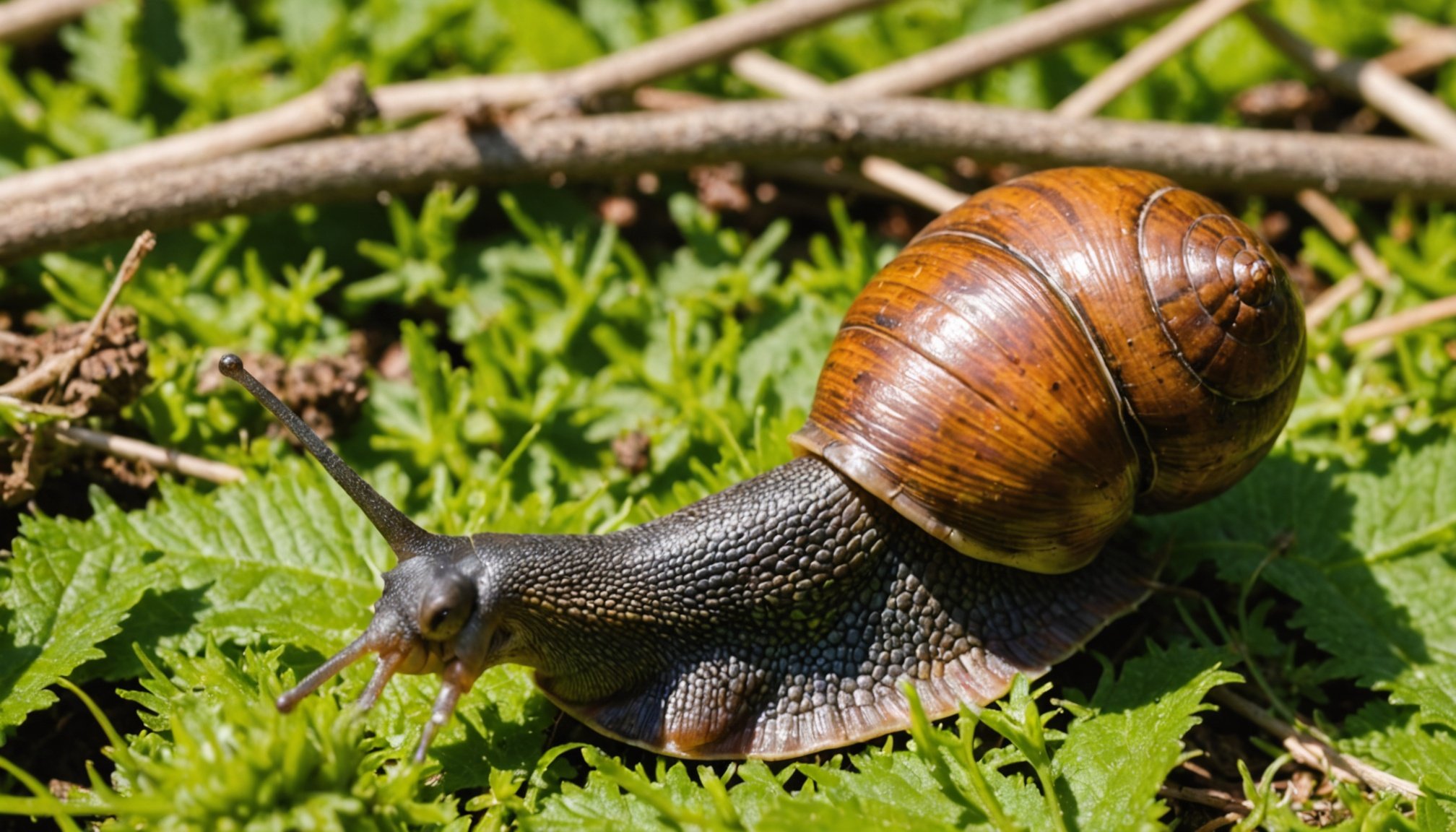Understanding the Snail Problem in UK Gardens
Snail infestations pose significant challenges to UK gardeners, often making these pesky creatures one of the most notorious garden pests. Various snail species inhabit the UK, such as the common garden snail (Cornu aspersum), which is well-adapted to the moist climate found in many regions. Their voracious appetite means they can swiftly decimate young seedlings and plants, leading to noticeable declines in garden health and crop yields. The narratives of many gardeners often feature the nightmarish scene of snails munching through their prized lettuces.
The impact of these small molluscs is multifaceted. Beyond damaging plants, snails can contribute to soil imbalance by selectively feeding on certain plant species, thereby disrupting the local ecosystem. Successful management of snail infestations requires understanding their seasonal behavior and lifecycle. Snails are most active during warmer months with ample moisture, typically emerging in spring and remaining active through autumn.
Avez-vous vu cela : Exploring the Benefits of Rainwater Harvesting for Sustainable Home Gardens in the UK
During winter, snails enter a dormant phase, retreating into sheltered environments to escape harsh conditions. To effectively manage these pests, gardeners must tailor strategies to these periods of activity, focusing efforts when snails are least dormant. Recognising the patterns and habits is key to mitigating their impacts.
Organic Control Methods for Snails
Finding effective organic snail control solutions is crucial for gardeners seeking eco-friendly pest management strategies. Natural repellents and various techniques can keep these pests at bay without harming the environment.
A lire en complément : Discover the Best Vegetables for Shady UK Gardens: Top Shade-Loving Plants to Grow
Natural Repellents
Several home remedies prove useful in deterring snails. Diatomaceous earth, for example, is a favourite among gardeners. Sprinkling its powdery form around your garden creates a barrier. It is abrasive to snails, preventing their passage without using chemicals.
Copper also acts as an effective deterrent. When snails come into contact with copper surfaces, they experience a mild electric shock. This reaction ensures they stay away from areas protected by copper strips or tape.
Companion Planting
Engaging in strategic companion planting can enhance your garden’s defence system. Some plants naturally repel snails – for instance, garlic and chives. Pairing these with vulnerable plants can significantly reduce snail infestation.
Habitat Management
Crafting an inhospitable environment for snails is paramount. Reduce moisture in your garden by managing watering schedules and avoiding excess debris. Removing hiding spots and maintaining soil and plant diversity deters snails from settling comfortably. This thorough approach ensures garden health while supporting an eco-friendly pest management system.
Preventative Measures for Snail Infestations
A thriving garden design starts with the strategic layout. Preventing snails begins with reducing their attraction by selecting plant varieties they less prefer. Planting certain herbs like rosemary or thyme can help as these tend to deter snails. Additionally, positioning plants in a way that reduces shade and promotes air circulation diminishes snail-friendly environments.
Snail barriers provide another layer of protection. Copper tapes are particularly effective as they create an unpleasant electric charge when snails try to cross. Alternatively, crushed eggshells or diatomaceous earth can form physical barriers that snails are reluctant to traverse, owing to their rough texture.
Incorporating various snail traps into your garden is also beneficial. Beer traps are popular: snails find the yeasty aroma irresistible, leading them to an inescapable liquid tomb. This method effectively reduces snail populations over time.
Consistent garden maintenance plays a key role in managing potential snail infestations. Regularly removing leaf litter and debris eliminates hiding spots. Additionally, watering in the mornings instead of evenings ensures the soil is dry by nightfall, making the environment less appealing for snails that favor moist conditions. This proactive regimen helps maintain a snail-free garden sanctuary.
Case Studies and Testimonials from UK Gardeners
Exploring gardener experiences across the UK sheds light on innovative practices and achievements within the gardening community. By examining success stories, real-life applications and methods become evident.
Interview with a Local Gardener
We spoke to Anne, a passionate local gardener with years of experience. Anne shared her strategies used in personal gardens that focus on improving soil quality and choosing the right plant combinations. Her measurable results and satisfaction levels speak volumes—using natural pest control methods has significantly reduced her garden pests without harmful chemicals. Anne advices beginners to start small and gradually expand their gardens. She believes that dedication to understanding your garden’s unique needs is fundamental to success.
Community-driven Solutions
Local gardening clubs play a crucial role by fostering community collaboration. These clubs provide an overview of local gardening clubs and their initiatives. Shared resources, such as tools and workshops, are paramount for effective snail control efforts. Attending events and workshops focused on organic gardening, these clubs offer practical and sustainable solutions for gardeners aiming to implement eco-friendly practices. Engaging with such communities not only enhances individual gardens but contributes to a collective greener future.
Visual Guides and Resources
In tackling snail control, visual aids are pivotal in guiding gardeners toward effective solutions. Infographics are particularly beneficial, presenting complex information about methods such as barriers, traps, and natural predators in an easy-to-digest format. These visuals provide insights into how each method works and what materials are needed, enabling gardeners to make informed choices swiftly.
For those inclined towards DIY solutions, detailed illustrations take one through achieving snail control autonomously. These step-by-step visuals break down tasks like creating physical barriers or concocting natural repellents, transforming what might seem daunting into an achievable endeavour. Understanding the process visually equips gardeners with the confidence to maintain a pest-free garden.
Instructional videos are also a treasure trove for practical guidance, catering to audiovisual learners. Watching experts demonstrate snail control in real environments offers invaluable tips, complementing static guides significantly. For further enrichment, exploring gardening guides online provides a plethora of resources. Numerous platforms host articles, community forums, and databases that recommend additional readings, allowing gardeners to delve deep into any snail control method. Leveraging these diverse resources ensures a comprehensive understanding and successful implementation of snail management strategies.






